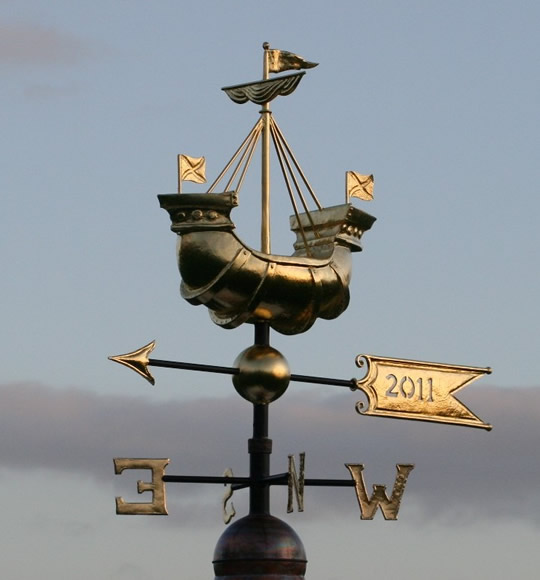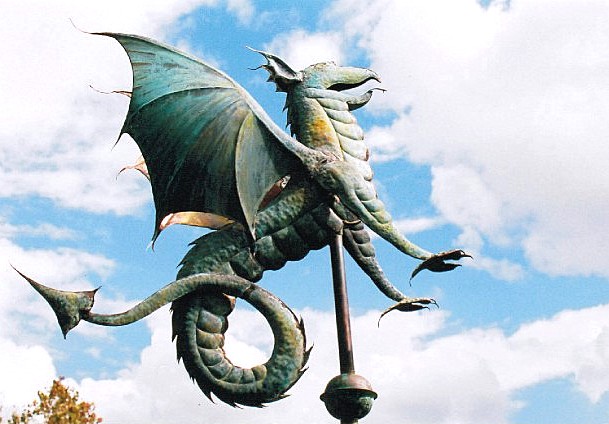Weather Vanes / Weathervanes
This blog is about weather vanes - also known as weathervanes, weather cocks or weathercocks.
[Last update 07/09/14: Look Up - St Thomas Church, Salisbury, England.
Originally begun on the Sun Spot Sundials blog which is primarily about sundials and compasses, it was deemed to be better to have a dedicated blog - which is where this one comes in.
 |
| Copper weathervane - a heraldic ship |
The link between sundials, compasses and weather vanes should become a little clearer as the first two were previously described as a means to showing the time and to show the way.
Weather vanes relate to showing the way but specifically for showing the way the wind blows.
Wikipedia for example describes a weathervane or weathercock as an instrument for showing the direction of the wind and typically used as architectural ornaments to the highest point of a building.
Although partly functional, weather vanes are often quite decorative, featuring the traditional cockerel - hence the name weathercock being associated with them, with a design with letters indicating the points of the compass. Other common motifs include ships, arrows and horses. Not all weather vanes have pointers.
 |
| Comet (flaming star) weathervane [PM 15/10/10, Lisbon, Portugal] |
Weather vanes have actually been around for hundreds and hundreds of years. The word 'vane' comes from the Old English word fana meaning 'flag'.
Today weathervanes come in a bewildering range of designs in almost any shape and size.
Examples other than the more traditional cockerels, farm animals, ships and particular trades e.g. blacksmiths now includes almost anything you could think of from foxes to giraffes and national flags to Mary Poppins.
One of the most unexpected, strange and huge examples that I have come across is a full size airplane - a fixed-wing propeller driven airliner, a retired Douglas DC-3 (CF-CPY) atop a swiveling support mainly used by pilots to determine wind direction. This weather vane only requires a 5 km/hour wind to rotate and now serves as a weather vane at the Erik Nielsen Whitehorse International Airport in Whitehorse, Yukon Territories, Canada.
 A full size airliner used as a weathervane
A full size airliner used as a weathervanePrivate and Public
A fine example of a public area weathervane is the one in Gateshead, England.
A good example of a private (private commission) weathervane is the David Smith dragon weathervane.
 |
| David Smith dragon weathervane |
Look Up

St Thomas Church, St Thomas's Square, Salisbury, England

Reference
There are a variety of sources of information on weathervanes including but by no means limited to:- The Art of the Vane - the artists at Greens Weathervanes share their inspirations from the world of art, design and architecture.
- Encyclopedia.com
- Har-ber Village - an information page about weathervanes on this site for a pioneer-era village in the USA.
- WeathervanesPlus
- Wikipedia

No comments:
Post a Comment